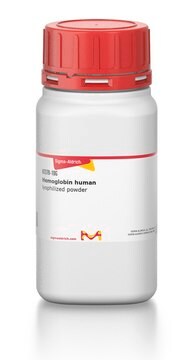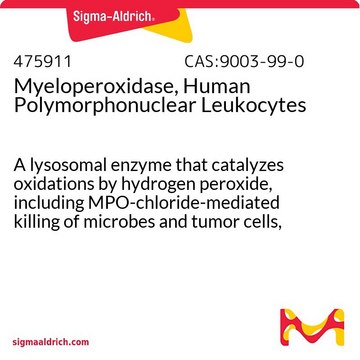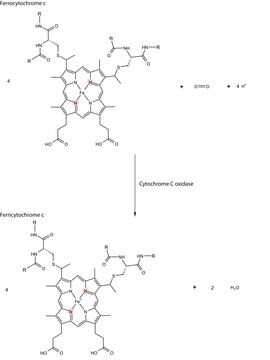A3672
Azurin
from Pseudomonas aeruginosa, lyophilized powder
About This Item
Recommended Products
biological source
Pseudomonas aeruginosa
Quality Level
form
lyophilized powder
composition
Protein, ≥65% Lowry
concentration
≥65.0% (Lowry)
technique(s)
toxicology assay: suitable
solubility
water: soluble 1—1.1 mg/mL, clear, blue (light blue to blue)
UniProt accession no.
storage temp.
−20°C
Gene Information
Pseudomonas aeruginosa ... AZU(878046)
Looking for similar products? Visit Product Comparison Guide
General description
Application
- in the cytotoxicity and cell viability studies in human osteosarcoma cell line
- for the functionalization of silicon nitride cantilevers for interaction studies
- for coating gold surface and insulating functionalized oxide surfaces of silicon oxide and mica
Biochem/physiol Actions
Physical form
Storage Class Code
11 - Combustible Solids
WGK
WGK 3
Flash Point(F)
Not applicable
Flash Point(C)
Not applicable
Personal Protective Equipment
Certificates of Analysis (COA)
Search for Certificates of Analysis (COA) by entering the products Lot/Batch Number. Lot and Batch Numbers can be found on a product’s label following the words ‘Lot’ or ‘Batch’.
Already Own This Product?
Find documentation for the products that you have recently purchased in the Document Library.
Our team of scientists has experience in all areas of research including Life Science, Material Science, Chemical Synthesis, Chromatography, Analytical and many others.
Contact Technical Service








